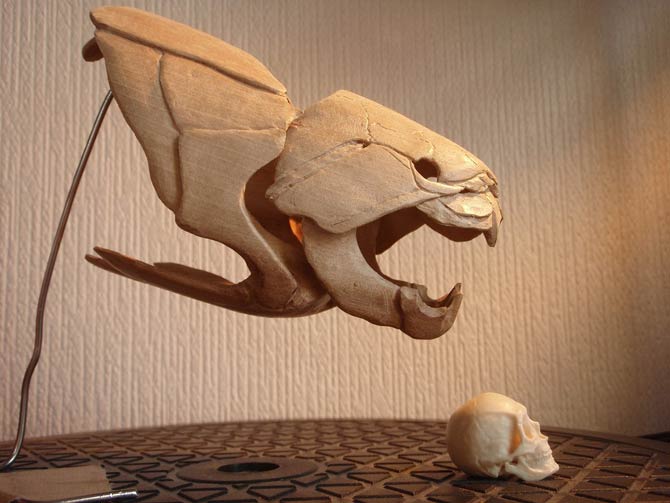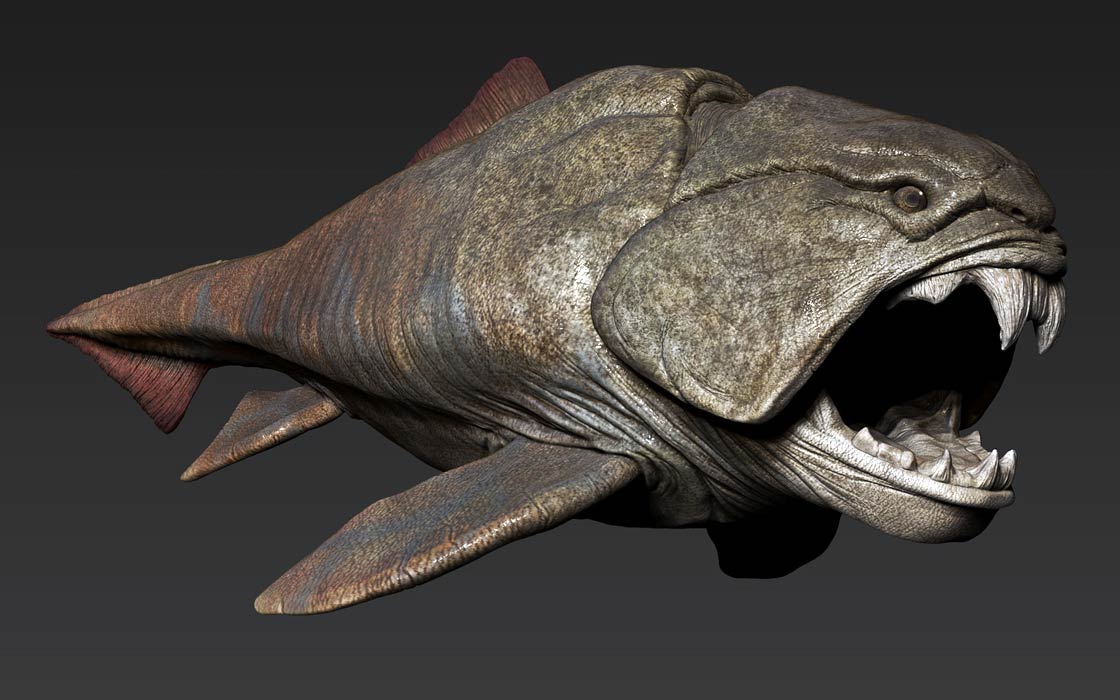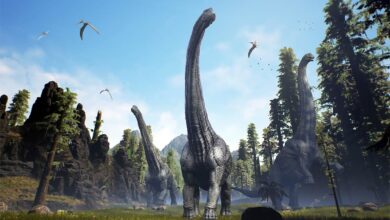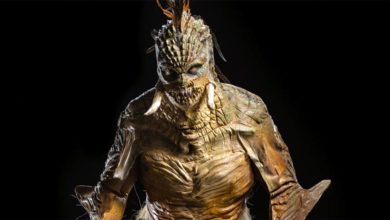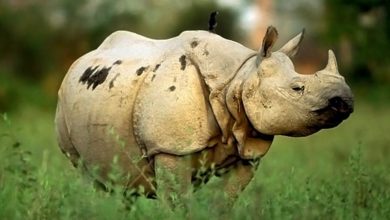Dunkleosteus – armored fish
In the seemingly fathomless depths of Earth’s prehistoric oceans, long before the formidable Great White shark or the massive Megalodon staked their claim as apex predators, there lurked a bona fide marine monstrosity—a ruling titan whose phenomenal size, uncanny anatomical adaptations, and unstoppable force reigned supreme during the sinister Devonian era. Introducing the Dunkleosteus – an awe-inspiring, elusive leviathan that dominated the ancient waters over 350 million years ago with its astonishing fusion of prodigious strength, ferocious appetite, and evolutionary ingenuity.
Embark now on a fascinating odyssey through time as we plunge fearlessly into the abyss, eager to unravel the enigmatic secrets, timeless allure, and bone-crushing reality of the mind-boggling behemoth that established the gold standard for aquatic terror, cementing its legacy as arguably the most formidable prehistoric sentinel our world has ever seen.
The animal described in this article is a perfect example confirming the view that the Devonian was the age of fish. Indeed, individuals of the genus Dunkleosteus were true killing machines that all Late Devonian water creatures feared. Before us is another, after megalodon, representative of prehistoric fish – the terror of contemporary animals and an object of fascination for modern scientists, lovers of paleontology and beyond.

Classification
- Kingdom: Animalia
- Phylum: Chordata
- Class: †Placodermi
- Order: †Arthrodira
- Family: †Dunkleosteidae
- Genus: †Dunkleosteus
- Species:
- Dunkleosteus terrelli – Type species
- Dunkleosteus amblyodoratus
- Dunkleosteus belgicus
- Dunkleosteus denisoni
- Dunkleosteus magnificus
- Dunkleosteus marsaisi
- Dunkleosteus missouriensis
- Dunkleosteus newberryi
- Dunkleosteus raveri
Dating and occurrence
This armored fish swam in the waters of the Late Devonian about 380-360 million years ago. So it appeared at a time when fish was experiencing a full bloom. For this reason, the Devonian is sometimes referred to as the Age of Fish.
The genus Dunkleosteus is believed to have lived mainly in coastal waters.
Over the years, numerous fish fossils of the genus Dunkleosteus have been discovered. Many traces of these powerful animals have been found in North America, Morocco, Belgium and Poland.
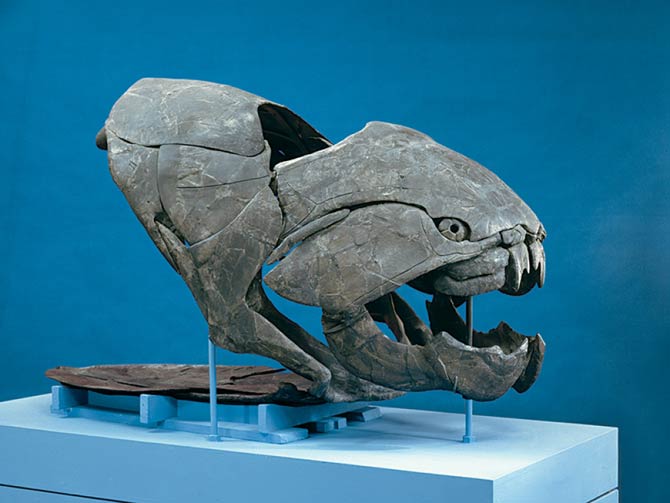
Characteristic
Appearance
Due to the armored body, the Dunkleosteus probably swam slowly. However, they did not have to worry about attacks from other animals (apart from other Dunkleosteus). At that time, they were alpha predators, located at the top of the food chain.
Scientists are only certain about the structure of the head because it was the hardest, and geological processes acted on it less than the rest of the body. The entire silhouette was reconstructed based on smaller animals, such as Coccosteus, which survived in good condition. The head was most likely covered by thick armor; the other parts of the body were soft, so they decomposed quickly.
As the body was not covered with a characteristic, hard shell, it allowed for more agile, though still slow, movements.
Pigment cells found on the skeletons show that the fish had a dark color on the back, while the belly was covered with silvery skin.
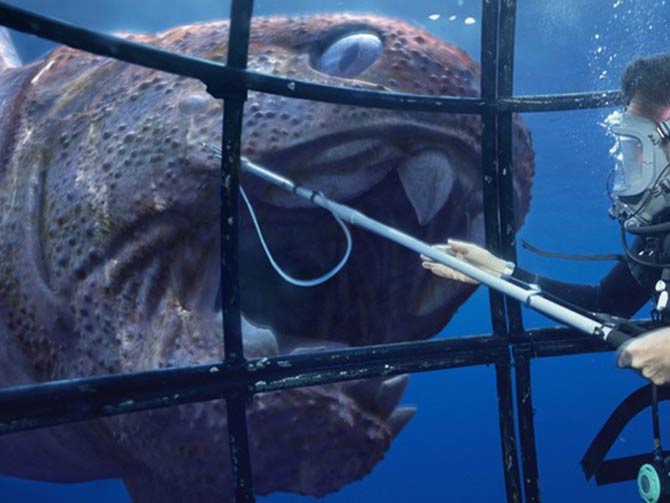
Jaws
This fish, although powerful and carnivorous, had no teeth, but sharp bone plates that formed a kind of beak. This weapon was one of the strongest and best killing machines. Even modern sharks, including the great white shark, cannot boast of similar bite force. Only the megalodon had stronger jaws – a prehistoric, powerful shark that appeared on Earth several hundred million years after Dunkleosteus.
The armored predator had no equal during its reign. The bite force was almost 2 tons (some scientists estimate that it was over 3 tons). This would mean that the bite force was similar to that of the T. rex and greater than that of modern saltwater crocodiles. Apart from a strong grip of its jaws, this fish could open its mouth at a speed of 1/50 of a second, which generated a powerful suction force. Thanks to this, she could simply suck in her victims.
Extremely strong jaws made it possible to catch any victim. It seems, however, that the menu of this powerful fish depended on the age of the individual. The juvenile fish probably had more stiff jaws, so it was safer to hunt soft prey. In adults, bone plates became more flexible, so the risk of their breaking and damage in contact with hard prey was much lower.
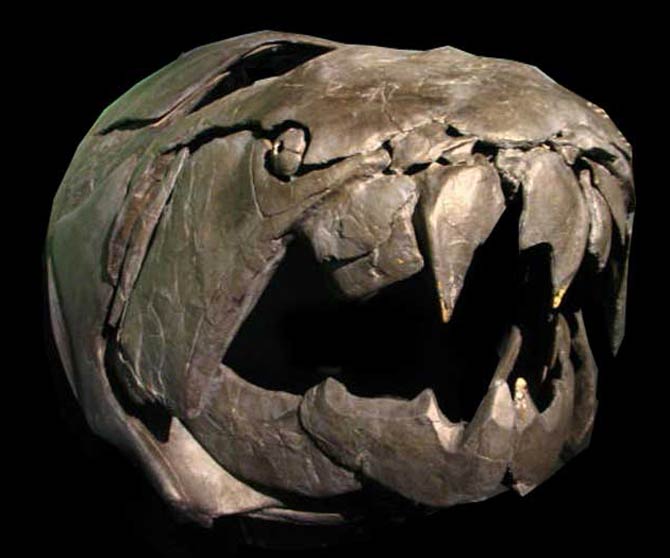
Hunting tactics
Since it was one of the largest representatives of predatory fish in history and the owner of incredibly strong jaws, it could afford almost any nutritional whim. Dunkleosteus ate everything he could catch, he did not even shy away from cannibalism – the bite marks on the skeletons of Dunkleosteus testify to this. It probably did it in times when it was difficult to find other prey. Similar actions show that it was able to pierce very hard skin coatings.
It hunted mainly various types of arthropods, ammonites and other armored fish. Partially digested, returned parts of other fish were often found near the skeletons found, suggesting that Dunkleosteus ate greedily and was unable to digest the bones.
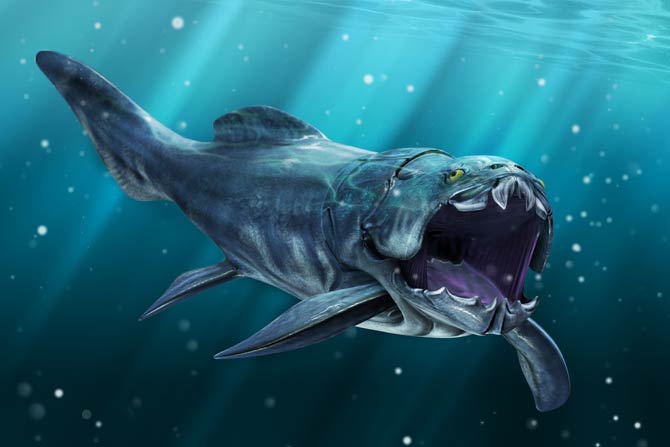
Armored fish
Armored fish (Placodermi) reigned relatively briefly on our planet. They lived from the late Silurian to the end of the Devonian (430 to 360 million years ago). They died out during the Devonian extinction. Unlike sharks, whose history goes back 420 million years, they did not stay on Earth for too long.
Detailed data / dimensions (size)
Dunkleosteus
- Body length: 8-10 m (26 – 33 ft)
- Engelman’s reconstruction (2023): up to 4.1 m (13.5 ft)
- Weight: 3-4 tons
- Engelman’s reconstruction (2023): 1,49–1,76 tons (3,280–3,880 lb)
- Bite force: from 600 kg to 3 tons
- Mouth opening speed: 20 milliseconds
- Lived: Devonian: 382–358 million years ago
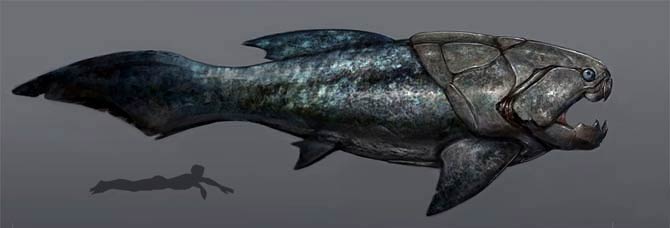
Dunkleosteus – interesting facts
- The scientific name is a combination of the surname Dunkle (from paleontologist David Dunkle) and the Greek word osteus, meaning “bone.”
- Some species such as D. marsaisi, D. magnificus, and D. terrelli are considered to be some of the largest Arthrodira ever to live. In addition to huge armored fish of the genus Titanichthys, they form the forefront of the largest known representatives of the extinct group so far.
- Dunkleosteus was one of the largest vertebrates of its time and one of the largest fish in the Devonian seas.
- Armored fish appeared in the Silurian, died out between the Devonian and Carboniferous, leaving no descendants who could survive to this day.
- Dunkleosteus may have been one of the earliest animals to show sexual separation. This means that these fish could interact and copulate with each other.
- The most famous specimens of the genus Dunkleosteus are on display at the Cleveland Museum of Natural History, the American Museum of Natural History, and the Queensland Museum.
- Although the genus Dunkleosteus contributed to the success of vertebrates, the reasons for its extinction remain a mystery to this day.
